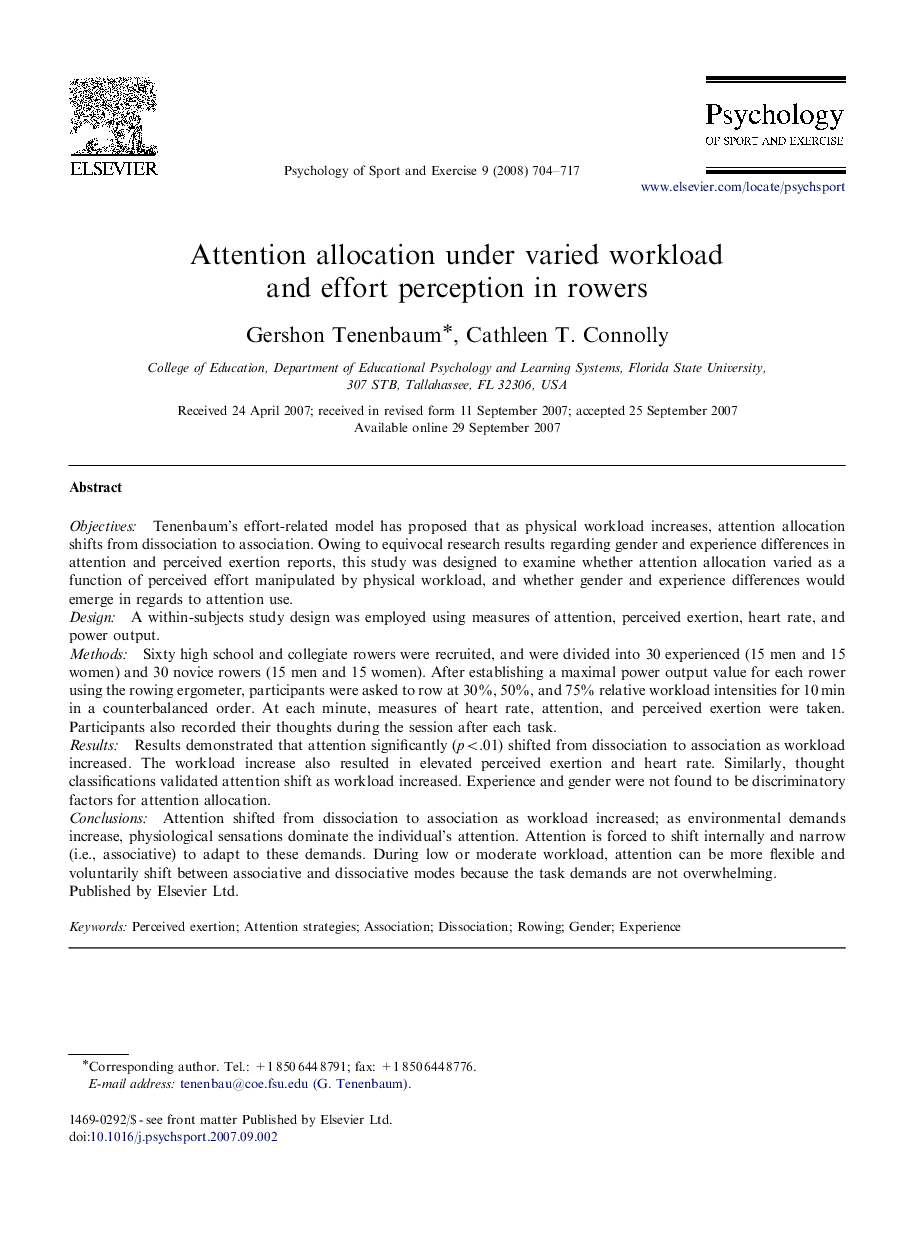| کد مقاله | کد نشریه | سال انتشار | مقاله انگلیسی | نسخه تمام متن |
|---|---|---|---|---|
| 894969 | 1472151 | 2008 | 14 صفحه PDF | دانلود رایگان |

ObjectivesTenenbaum's effort-related model has proposed that as physical workload increases, attention allocation shifts from dissociation to association. Owing to equivocal research results regarding gender and experience differences in attention and perceived exertion reports, this study was designed to examine whether attention allocation varied as a function of perceived effort manipulated by physical workload, and whether gender and experience differences would emerge in regards to attention use.DesignA within-subjects study design was employed using measures of attention, perceived exertion, heart rate, and power output.MethodsSixty high school and collegiate rowers were recruited, and were divided into 30 experienced (15 men and 15 women) and 30 novice rowers (15 men and 15 women). After establishing a maximal power output value for each rower using the rowing ergometer, participants were asked to row at 30%, 50%, and 75% relative workload intensities for 10 min in a counterbalanced order. At each minute, measures of heart rate, attention, and perceived exertion were taken. Participants also recorded their thoughts during the session after each task.ResultsResults demonstrated that attention significantly (p<.01) shifted from dissociation to association as workload increased. The workload increase also resulted in elevated perceived exertion and heart rate. Similarly, thought classifications validated attention shift as workload increased. Experience and gender were not found to be discriminatory factors for attention allocation.ConclusionsAttention shifted from dissociation to association as workload increased; as environmental demands increase, physiological sensations dominate the individual's attention. Attention is forced to shift internally and narrow (i.e., associative) to adapt to these demands. During low or moderate workload, attention can be more flexible and voluntarily shift between associative and dissociative modes because the task demands are not overwhelming.
Journal: Psychology of Sport and Exercise - Volume 9, Issue 5, September 2008, Pages 704–717